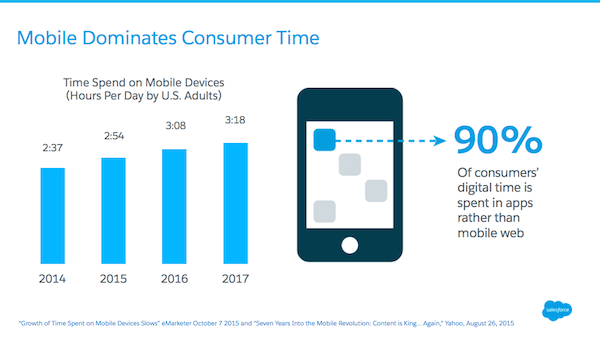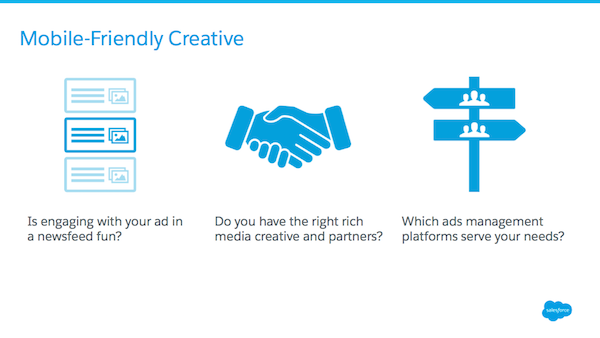
Get your FREE 30-day trial.
Please complete all fields.
Often times when I’m working with customers to develop their advertising strategy, I find they think about creative strategy last and when there is no time left to create something that is meaningful to the consumer. Marketing automation is more prevalent than ever before, but as we automate more, the importance of the creative messaging is often lost. The goal is to reach the customer at the right place, at the right time and in the right channel, however, what often suffers is the proper creative strategy. McKinsey published a great article that describes how consumers are moving outside the purchasing funnel and how marketing has fundamentally changed. Knowing this, it’s the Marketer's responsibility to leverage all the available tools out there to be better informed about the right message to put in front of their customer.
Consumers spend 2:54 hours of non-voice time on mobile devices and that will grow to 3:18 by 2017, according to eMarketer. As marketers we not only need to be mindful of how to adjust the creative message to fit on smaller screens, but how information is consumed on multiple types of devices also poses new challenges.

Here are three key things to consider when thinking about developing a creative strategy.
I recently worked with a large beverage company to help develop a strategy to obtain higher engagement rates with their digital advertising efforts. They created an advertising unit that appeared natively within apps that are a part of the Facebook Audience Network. The ad pulled the consumer into the brand experience. It was not disruptive in anyway and in fact it was so engaging, I found myself interacting with the ad for over five minutes! Ensuring the creative experience is mobile friendly means a few things. Since consumers spend about three hours of time on mobile devices we are now challenged to be even craftier given the actual size of the screen versus a desktop experience. Making sure you have separate creative for both experiences will provide better ad recall because you are programing specific creative messaging for that experience.

With all of the social media tools available today, it’s very easy to quickly pull insights about what your customers think of your brand. You can use Salesforce Social Studio to listen across multiple online sources for specific topics or events that people are talking about. One of our customers who is leveraging this well is KLM Airlines. They use their Twitter presence to respond to customer inquiries in real time, including publishing a Social SLA and and working around the clock in six different languages. They were able to capture customers who they deem to be “high value” and used marketing automation tools to place relevant paid advertising on Twitter with offers and discounts on upcoming travel all based on the insights derived from the activity on Twitter.
This works quite well when you are developing a new product or looking to your core consumer base for real-time feedback. Never before in the history of marketing are we able to receive immediate feedback from our customers, so take advantage of it!
Leverage insights from social listening to better inform you creative will ensure you are delivering a creative message that will resonate with either new customers you are looking to acquire, or continuing the conversation with your current customers. You can also use Salesforce Active Audiences to automatically target anyone talking about specific groups of keywords.
Think outside of walls of not only your team, but also your organization. Speak to your digital and email teams, agency and platform partners such as Facebook to see where they are finding success. This is a chance to collaborate with key stakeholders who all have relationships with your customers to derive insights on what might resonate most with them. Not only are your partners working across multiple industries, but the scale in which data can be retrieved is a huge upside that can be capitalized on.
Request a demo to learn more about the Salesforce Marketing Cloud can help you optimize your advertising.